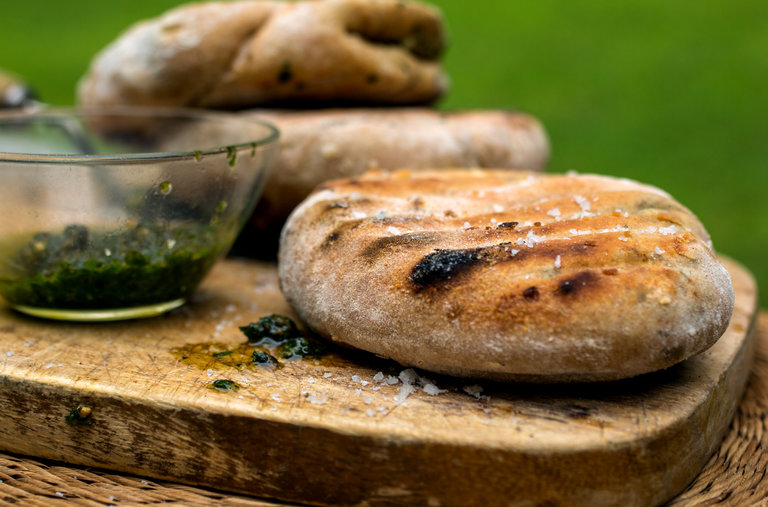My introduction to Lebanese street food was at an outdoor market in Paris, when I had just moved there in the early days of the 21st century. As I would learn, Lebanese savory treats are common at Parisian markets, a great boon to the hungry shopper.
You get to the market by 10 a.m., when everything is fresh, glistening and appealingly displayed. After perusing the offerings and filling your bag with the produce that will be dinner, you may feel a bit peckish. Then you notice the aroma of little flatbreads wafting from a hot griddle, and you head to the Lebanese stand.
The typical griddle for baking these flatbreads is a superheated iron dome called a saj. The baker rolls out a thin round of soft dough and quickly slaps it against the hot iron.
The flatbread, flipped once, cooks for a few minutes until lightly browned and pliable. Then, still warm, it is brushed generously with the Middle Eastern spice blend called za’atar, which is mixed with olive oil to make a paste.
It is a pleasure to eat one of these breads, called ma’noushe, whether at the market, or on the way home.
An ancient mixture, za’atar normally contains a few types of wild thyme, sumac, sesame seeds and salt. The combination is extremely satisfying: The wild thyme is herbal, the sumac sour and the sesame nutty, and there’s just enough salt to make it the perfect seasoning for any number of ingredients and dishes.
You can find authentic za’atar at Middle Eastern groceries or online spice merchants. (Or make a version at home, using toasted sesame seeds, dried thyme, marjoram and oregano, adding sumac and salt to taste.) The mixture can vary greatly throughout the Levant. Lebanese, Syrian, Jordanian and Israeli za’atar differ in color and pungency, depending on the balance of wild thyme to sumac, and other spices, like cumin or fennel seed, are sometimes added.

A number of spices, as well as za’atar, are used to flavor the flatbread.CreditAndrew Scrivani for The New York Times
A simple way to enjoy za’atar is sprinkled on fresh bread that has been dipped in fruity olive oil, but it’s easy to make za’atar flatbreads. I call for baking them on a sheet pan, but you could use a pizza stone or hot cast-iron skillet, or cook them on a charcoal grill.
For a grander version without much more effort, you can make a meaty topping with spiced ground lamb that is briefly cooked with sautéed onions. Baked on a za’atar-dabbed dough with crumbled feta and a few pine nuts, it’s a bit more pizza-like.
As your kitchen fills with the scent of savory baking, you can daydream about a trip to Beirut, with a stopover in Paris.
Recipe: Lamb Flatbread With Za’atar






